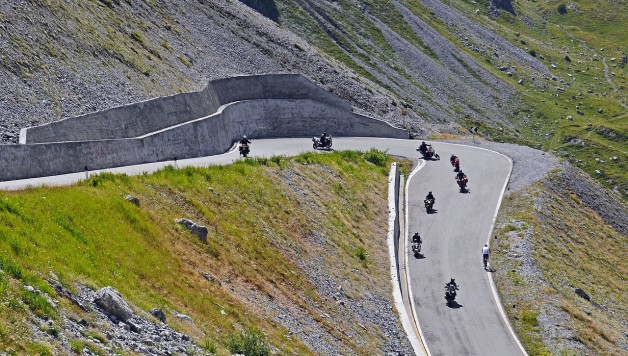How to Prepare for a Long Motorcycle Trip
If you don’t plan the details of a motorcycle trip, you may waste time, money, and miles. Or you’ll risk being stranded on the side of the road without fuel or money. Here are tips on how to prepare for a long motorcycle trip and make the most of every mile.
Plan Your Route
Pick a destination. Where are you planning on going? Once you have a destination, you can start planning routes to take, a timetable for stops, and a date to leave. After all, few people want to ride down to Albuquerque in July but would enjoy the trip in November. If you decide to visit Canadian sites, summer is far safer and more pleasant than winter.
Set Your Budget
Your budget will determine many aspects of the trip. If you’re tight on cash, you should plan on cheap ways to sleep, whether it’s packing sleeping bags or stops at friends’ houses. If you have more cash, you can plan on staying at hotels or even resorts. Camping grounds are in between these two options on price, but you need to know how much you allocated for lodgings to decide where to stop en-route to sleep. For example, if you have a large budget, you can stop at almost any hotel for the night. If you need to sleep in friends’ houses or the side of the road, you’re going to have to schedule each leg of the trip in detail.
Plan Activities and Stops
Your budget is going to determine whether you eat out for every meal or need to plan a stop at Walmart for sandwich fixings every few days. However, you should also plan safe and convenient stops every few hours. While you can ride all day in a vehicle, allowing for bathroom breaks, many motorcycle riders forget how time can drag when you try to ride eight hours straight. New bikers don’t realize that riding three hours in a car feels shorter because you can talk to everyone, listen to the radio or read. It feels like six on a bike.
Make Plans Regarding Gear
Are you planning a long trip on your bike? Invest in a windshield. Yes, the wind feels good in your hair for the first hour. After a few hours, especially at top speed, it is infuriating.
Biking without a helmet is a crime in some jurisdictions. It is also not recommended since your odds of dying go way up if you’re hit when not wearing a helmet. The odds are even greater if you’re left on the side of the road in the middle of nowhere. You can reduce your risk by buying AGV helmets for everyone in your group. Earplugs will help save your hearing, too.
Unless you’re traveling on a route you already know well, plan on taking gear to help you know know where you are. A cell phone with map apps is a minimum. If you’re driving through rural areas with poor cell phone service, a GPS device may be a good investment. Paper maps are a good backup.
Conclusion
Plan your route, so that you can choose the best time to visit the area. Set a budget before you plan the other details of the trip since this affects your accommodations, your dining choices, and activities you may engage in. Decide where you’re going to stop at least overnight, and ideally, several times each day. Buy the right gear if you don’t already own it.













